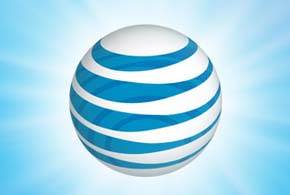AT&T rescheduled the release of its Q3 earnings, originally slated for Oct. 25, to Oct. 22 as the company finalized its bid to buy Time Warner.
As it set the wheels in motion for its $85.4 billion planned acquisition of media and entertainment company Time Warner, AT&T also released its third-quarter financial results, posting revenue of $40.9 billion, up from $39.1 billion a year earlier, and net income attributable to AT&T of $3.3 billion, up from $3 billion in 2015.
The company’s third-quarter results were almost lost in the news this week after the blockbuster acquisition deal for Time Warner was unveiled on Oct. 22. Originally scheduled for release on Oct. 25, the third-quarter results were also announced on Oct. 22, just after the Time Warner deal was revealed.
AT&T reported operating income of $6.4 billion in the quarter, up from $5.9 billion a year prior. Diluted earnings per share attributable to AT&T are 54 cents per share, up from 50 cents a share in the same quarter in 2015.
In the third quarter, AT&T reported 53.9 million total consumer wireless subscribers, down 1.7 percent from 54.8 million a year ago.
AT&T reported 21 million postpaid net phone customer adds in the quarter, down from 23 million one year ago. The company logged a third-quarter postpaid churn rate of 1.19 percent, down from 1.33 percent in 2015.
Bill Menezes, an analyst with Gartner, told eWEEK that AT&T’s “numbers are consistent with the early release that preceded the Time Warner announcement, so no real surprises there. The wireless business has slowed, and like Verizon, AT&T is feeling the impact of resurgent competition from T-Mobile and, to a lesser extent, Sprint.”
In the meantime, AT&T’s “strategy to broaden its revenue base seems to be working so far, with new revenue sources in the Mexico cellular and DirecTV businesses providing growth it no longer may be able to get consistently from the U.S. consumer wireless market,” said Menezes. “Once again, ‘connected devices’ provided the majority of AT&T’s wireless net adds in both business and consumer markets, underscoring its strategy for IoT growth as a big source of new revenue going forward.”
Also notable, he said, is that AT&T’s Cricket prepaid business “continues to grow rapidly, a possible sign that AT&T as well as T-Mobile is taking prepaid customers from Sprint.”
Charles King, principal analyst at Pund-IT, said the AT&T quarterly results “looked good from an earnings perspective, but the company missed revenue targets,” which was disappointing. “While not as positive as one might have hoped, it still leaves the company in a good position to pursue Time Warner.”
Meanwhile, “the substantial gains AT&T enjoyed in its entertainment and Internet services segments should bolster the company’s claims about the strategic value of purchasing Time Warner,” said King. “A final point—AT&T continues to pay one of the highest dividend yields among blue chip companies, meaning that shareholders will likely stick with the company despite analysts’ grumbling about the wisdom of the Time Warner deal.”
Another analyst, Jan Dawson of Jackdaw Research, told eWEEK that even though AT&T’s financial health overall seems good, its growth is thin.
“On the TV side, DirecTV growth is basically almost offsetting declines in U-verse TV subscribers, but there’s no net growth yet, although that could change next quarter,” said Dawson. “On the wireless side, postpaid phones are still shrinking, although it’s still seeing strong growth in connected devices like cars, and its prepaid business is growing nicely as well.”
Jeff Kagan, an independent telecom analyst, told eWEEK that AT&T is still very much in the marketplace in several categories.
“AT&T continues to be one of the most innovative companies in the space,” said Kagan. “They are transforming from a telephone company of yesterday to a technology company of tomorrow. With acquisitions like DirecTV last year and Time Warner this year, you can see how they are one of the leaders in the innovation wave.”
AT&T announced its pending Time Warner acquisition as a way for the two companies to bring content to customers on any screen as an alternative to existing cable providers, while also offering more choices to users seeking additional over-the-top and mobile viewing options.
Under the deal, AT&T will acquire Time Warner in a stock-and-cash transaction valued at $107.50 per share. The agreement has been approved unanimously by the boards of directors of both companies.
The merger is subject to approval by Time Warner shareholders and review by the U.S. Department of Justice, AT&T stated. If the deal is ultimately approved, the merger would join AT&T’s wireless, broadband and satellite TV offerings together with entertainment content from Time Warner, including its TNT, TBS, CNN and HBO cable networks, as well as its Warner Bros. film and TV studio.
Similar combinations and proposals of bringing together wireless carriers and entertainment or cable companies have been in vogue in recent years.
In July, Verizon announced a $4.83 billion deal to acquire search company Yahoo that hasn’t yet been completed. In September, AT&T said that its previously announced DirecTV Now video streaming services will launch in the fourth quarter of 2016, bringing the carrier’s wireless customers more options for receiving television programming at will. AT&T’s acquisition of DirecTV in July 2015 for $48.5 billion is part of the company’s efforts to reshape itself into a broader provider of business and consumer services.





![[CES 2026] Samsung Unveils The First Look 2026 Teaser –](https://loginby.com/itnews/wp-content/uploads/2026/01/CES-2026-Samsung-Unveils-The-First-Look-2026-Teaser-–-100x75.jpg)

